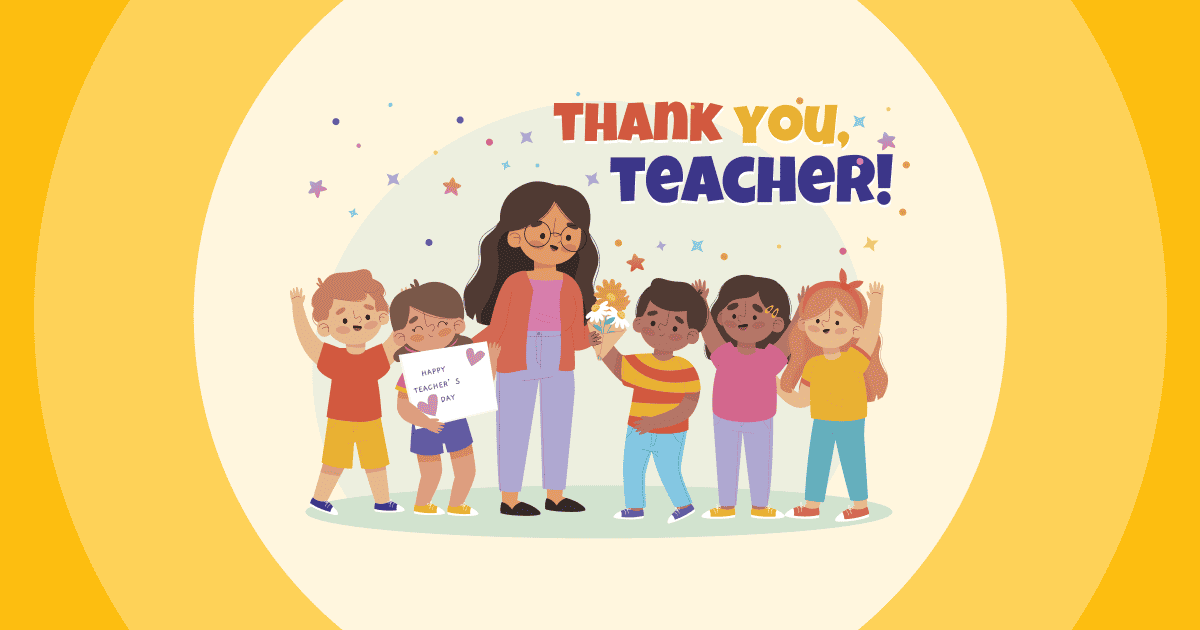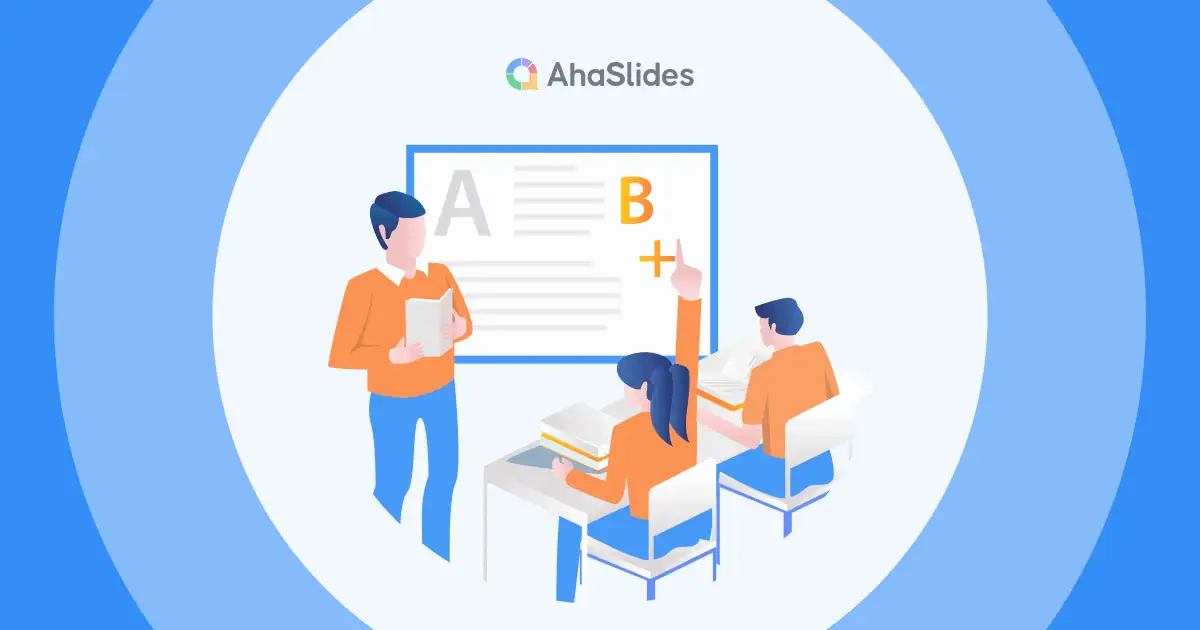“If you want to go fast, go alone; if you want to go far, go together.”
Similar to learning, an individual needs both personal thinking and group work to succeed. That is why the Think Pair Share Activities can be a useful tool.
This article fully explains what " think pair share strategy" means, and suggests useful think pair share activities to practice, as well as a guide on delivering and engaging these activities.
Table of Contents
- What is Think Pair Share Activity?
- What are The Benefits of Think Pair Share Activity?
- 5 Examples of Think Pair Share Activity
- 5 Tips to Having Engaging Think Pair Share Activity
- Frequently Asked Questions
What are Think Pair Share Activities?
The concept of Think Pair Share (TPS) stems from a collaborative learning strategy where students work together to solve a problem or answer a question about an assigned reading. In 1982, Frank Lyman indicated TPS as an active-learning technique in which learners are encouraged to be involved even if they have little intrinsic interest in the topic (Lyman, 1982; Marzano & Pickering, 2005).
Here's how it works:
- Think: Individuals are given a question, problem, or topic to consider. They are encouraged to think independently and generate their own ideas or solutions.
- Pair: After a period of individual reflection, participants are paired up with a partner. This partner can be a classmate, coworker, or teammate. They share their thoughts, ideas, or solutions. This step allows for the exchange of perspectives and the opportunity to learn from one another.
- Share: Finally, pairs share their combined ideas or solutions with the larger group. This step encourages active participation and engagement from everyone, and it provides a platform for further discussion and refinement of ideas.
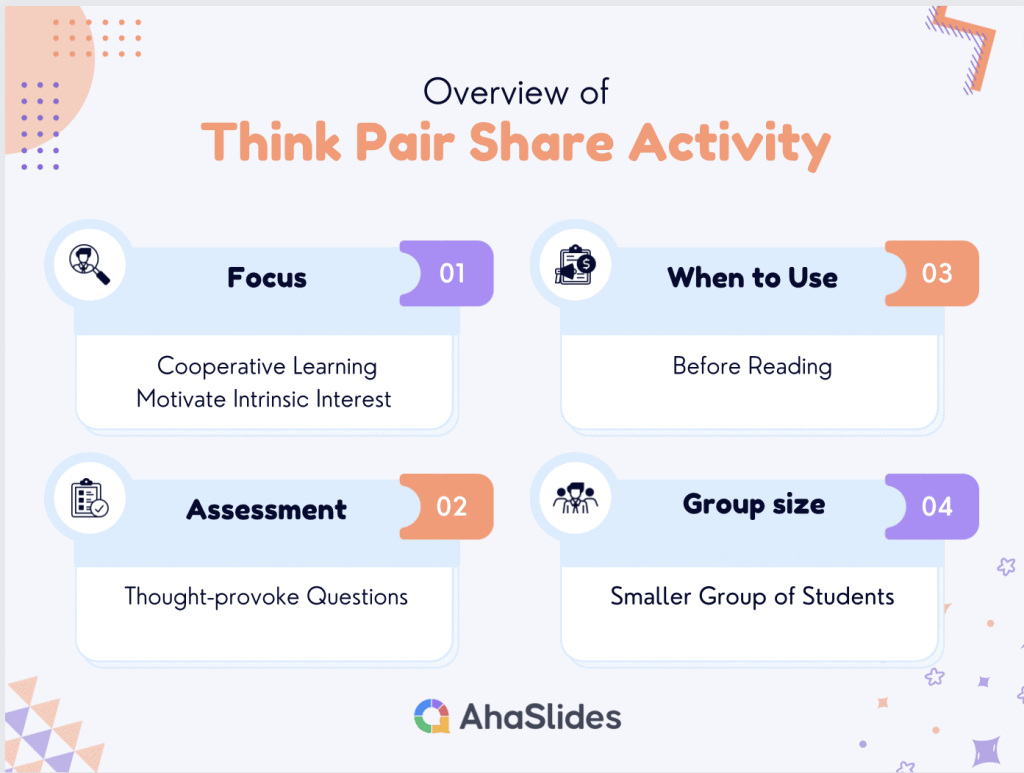
What are The Benefits of Think Pair Share Activity?
Think Pair Share activity is as important as any other classroom activity. It encourages students to engage in meaningful discussions, share their thoughts and ideas, and learn from each other's perspectives. This activity not only helps in developing critical thinking and communication skills but also promotes collaboration and teamwork among students.
In addition, the Think Pair Share activity is perfectly suitable in situations where not every student may feel comfortable speaking up in front of the entire class. Think Pair Share activity provides a smaller, less intimidating platform for students to express themselves.
Furthermore, in discussions with partners, students may encounter differing viewpoints. This provides an opportunity for them to learn how to respectfully disagree, negotiate, and find common ground—important life skills.

Tips for Better Engagement
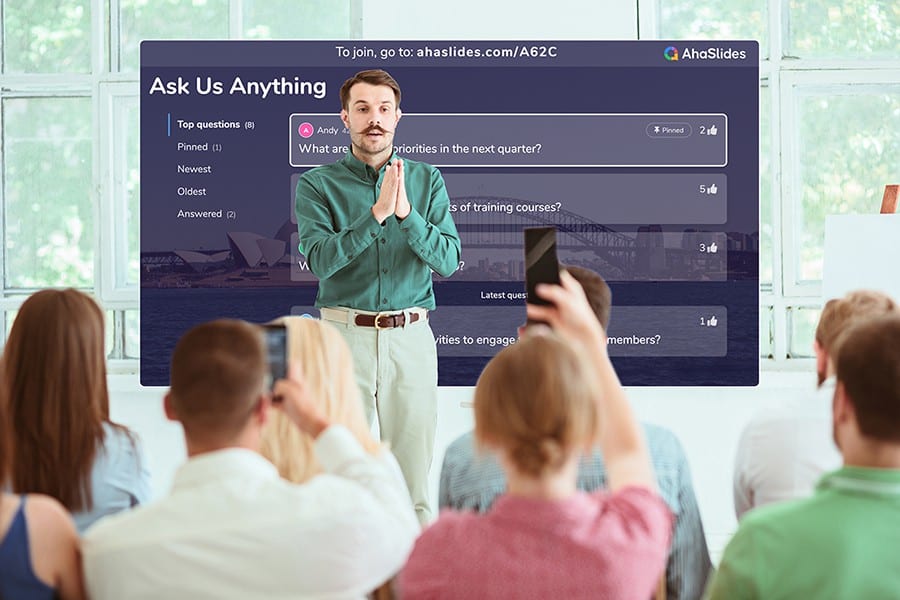
Make Your Own Quiz and Host it Live.
Free quizzes whenever and wherever you need them. Spark smiles, elicit engagement!
Get started for free
5 Examples of Think Pair Share Activity
Here are some innovative ways to apply the Think Pair Share activity in classroom learning:
#1. Gallery Walk
This is a great Think Pair Share activity to get students moving and interacting with each other's work. Have students create posters, drawings, or other artifacts that represent their understanding of a concept. Then, arrange the posters around the classroom in a gallery. Students then walk around the gallery and pair up with other students to discuss each poster.
#2. Rapid Fire Questions
Another Excellent Think Pair Share activity to try is Rapid Fire Questions. This is a fun way to get students thinking quickly and creatively. Pose a series of questions to the class, and have students pair up to discuss their answers. The students then share their answers with the class. This is a great way to get everyone involved and to generate a lot of discussion.
🌟You might also like: 37 Riddles Quiz Games With Answers To Test Your Smarts
#3. Dictionary Hunt
Dictionary Hunt is an incredible Think Pair Share activity for students, which can help them learn new vocabulary words. Give each student a list of vocabulary words and have them pair up with a partner. Students then have to find the definitions of the words in a dictionary. Once they have found the definitions, they have to share them with their partner. This is a great way to get students working together and learn new vocabulary.
For this activity, you can use AhaSlides' idea board, which is useful for students to submit their ideas in pairs, and then get to vote on their favorite.
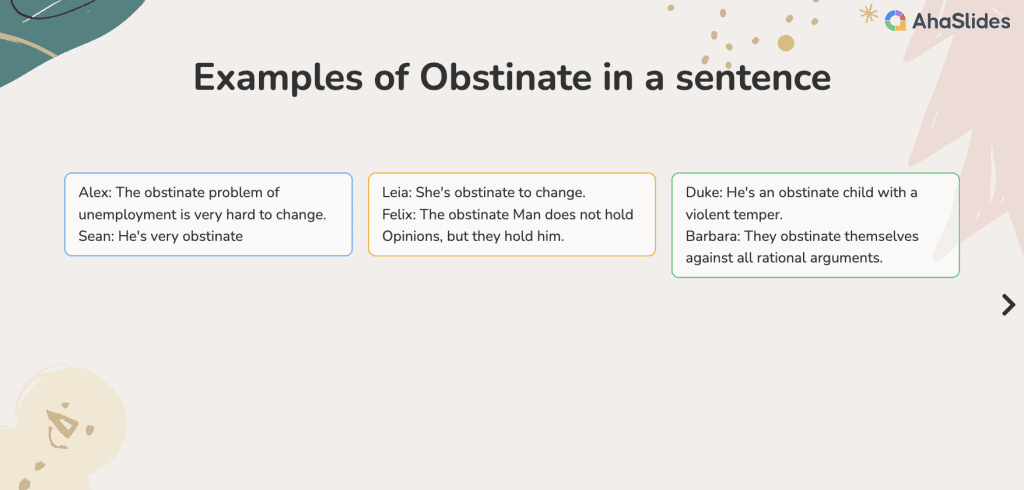
#4. Think, Pair, Share, Draw
This is an extensive Think Pair Share activity that adds a visual component. After students have had a chance to discuss their thinking with their partner, they have to draw a picture or diagram to represent their ideas. This helps students to solidify their understanding of the material and to communicate their ideas more effectively.
#5. Think, Pair, Share, Debate
A variation of the Think Pair Share activity that adds a debate component seems promisingly useful for students' learning. After students have had a chance to discuss their thinking with their partner, they have to debate a controversial issue. This helps students to develop their critical thinking skills and to learn how to defend their own ideas.
🌟You might also like: How to Hold a Student Debate: Steps to Meaningful Class Discussions
5 Tips to Having Engaging Think Pair Share Activity
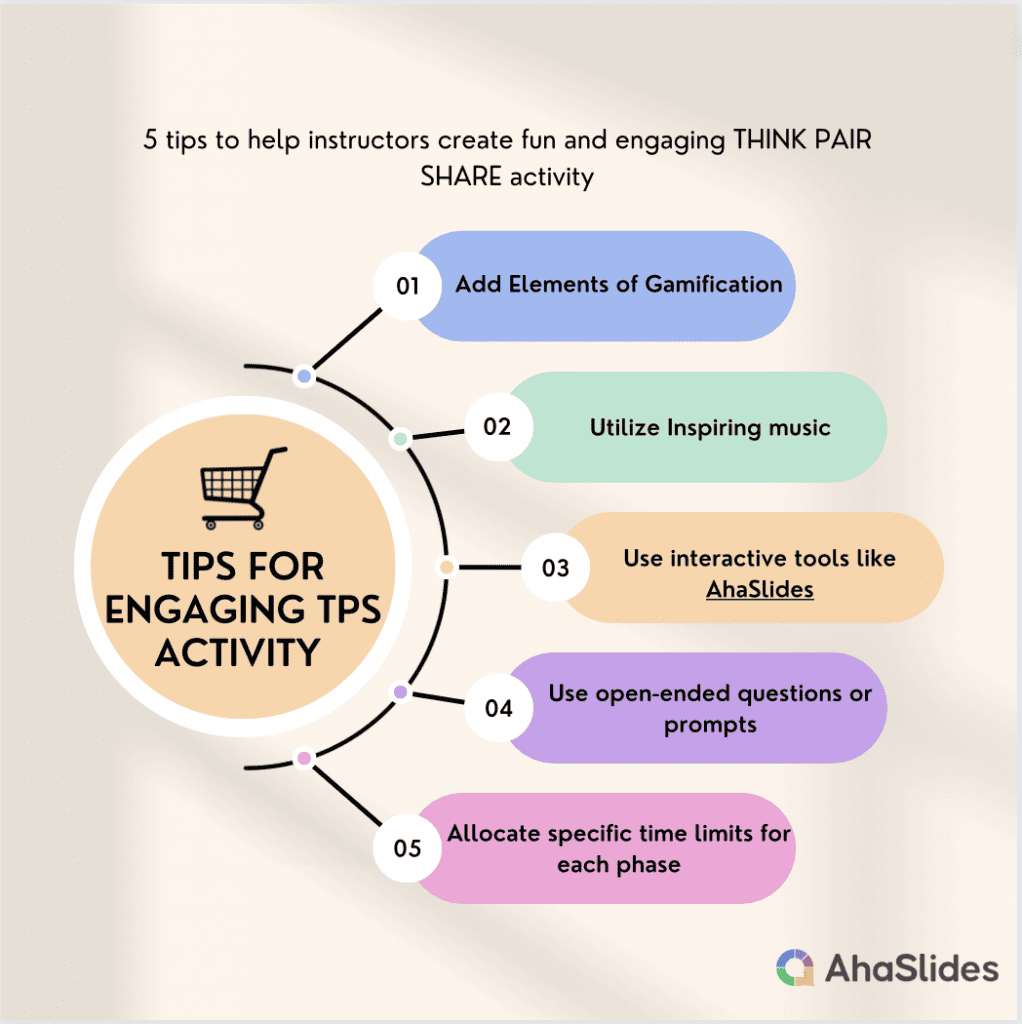
- Tips #1. Add Elements of Gamification: Turn the activity into a game. Use a game board, cards, or digital platforms. Students or participants move through the game in pairs, answering questions or solving challenges related to the topic.
Get Students Involved in a Round of Lesson Quiz Game
Try AhaSlides interactivities and grab free quiz templates from our template library! No free hidden💗
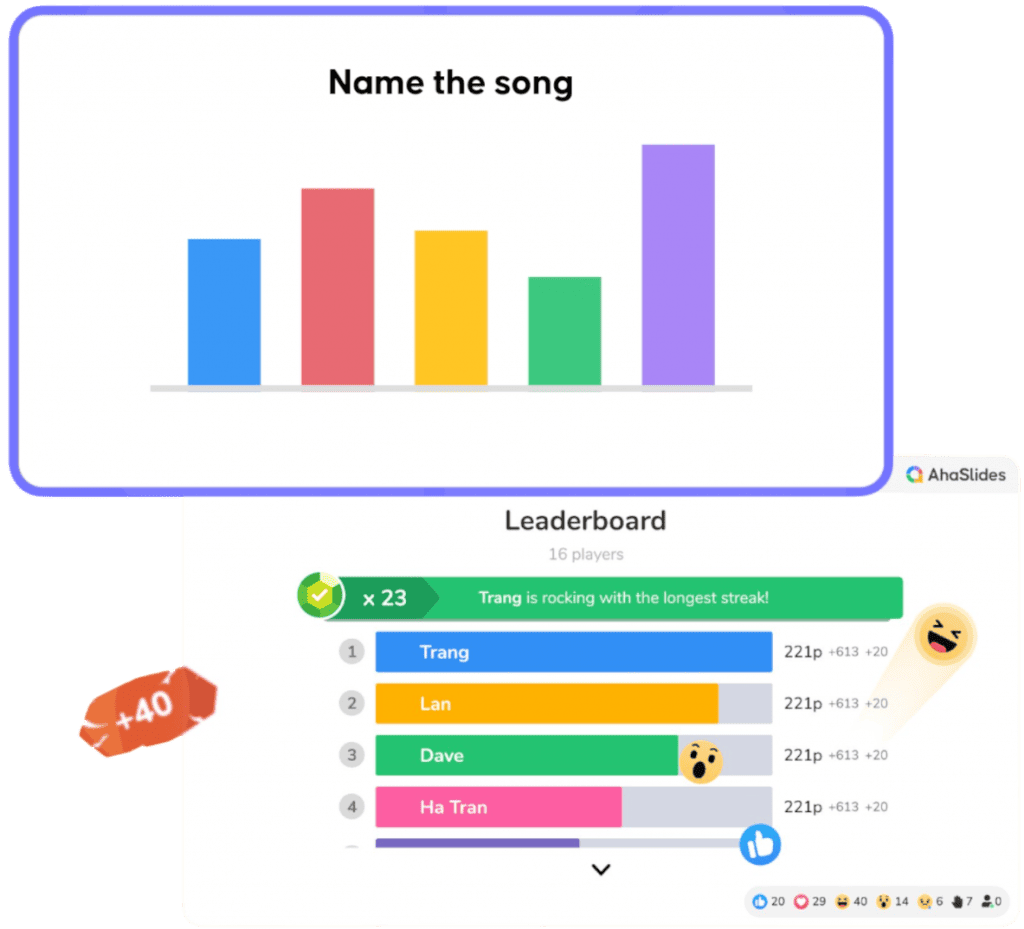
- Tips #2. Use Inspiring music. Music is a pivotal part that makes the learning process more productive. For example, use upbeat and energetic music for brainstorming sessions and reflective, calming music for introspective discussions.
- Tips #3. Tech-Enhanced: Utilize educational apps or interactive tools like AhaSlides to facilitate Think Pair Share activity. Participants can use tablets or smartphones to engage in digital discussions or complete interactive tasks in pairs.
- Tips #4. Choose Thought-Provoking Questions or Prompts: Use open-ended questions or prompts that stimulate critical thinking and discussion. Make the questions relevant to the topic or lesson at hand.
- Tips #5. Set Clear Time Limits: Allocate specific time limits for each phase (Think, Pair, Share). Use a timer or visual cues to keep participants on track. AhaSlides offers timer settings that allow you to quickly set time limits and control the activity efficiently.
Frequently Asked Questions
What is a think-pair-share strategy?
Think-pair-share is a popular collaborative learning technique that involves students working together to solve a problem or answer a question related to a given reading or topic.
What is an example of think-pair-share?
For example, a teacher might ask a question such as "What are some ways we can reduce waste in our school?" Students follow the Think, Pair, and Share principle to answer the question. It is basic to share activities, but teachers can add some games to make learning more fun and engaging.
How to do a think-pair-share activity?
Here are the steps on how to do a think-pair-share activity:
1. Choose a question or problem that is appropriate for the level of your students. For example, the teacher begins by asking the class a thought-provoking question related to climate change, such as "What are the major causes of climate change?"
2. Give students a few minutes to think about the question or problem individually. Each student is given a minute to silently think about the question and jot down their initial thoughts or ideas in their notebooks.
3. After the "Think" phase, the teacher instructs students to pair up with a partner sitting nearby and discuss their thinking.
4. After a few minutes, have students share their thoughts with the whole class. In this phase, each pair shares one or two key insights or ideas from their discussion with the entire class. This can be done by volunteers from each pair or by random selection.
What is the think-pair-share assessment for learning?
Think-pair-share can be used as an assessment for learning. By listening to students' discussions, teachers can get a sense of how well they understand the material. Teachers can also use think-pair-share to assess students' speaking and listening skills.
Ref: Kent | Reading rocket


